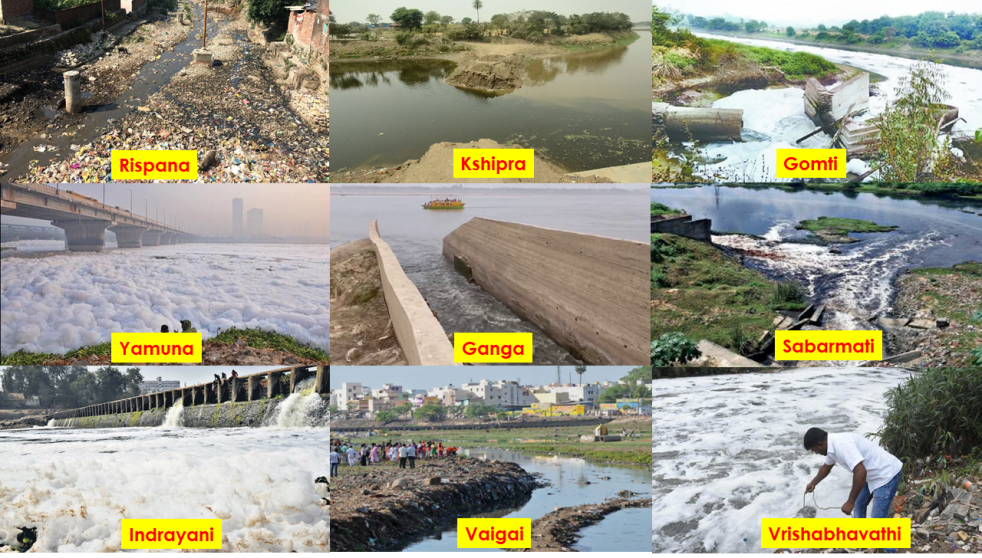(Feature Image:- A boat is anchored on Yamuna bank as toxic foam float in Delhi, June 5, 2021. PTI Photo/TIE)
This report focuses on various plans implemented and under consideration by respective governments vis- a-vis the plight of Urban Rivers in ten cities of India during past one year. It shows the preoccupation of the government in setting up of more and more Sewage Treatment Plants and Industrial Effluent Treatment Plants, even as most of the existing STPs and ETPs are known to be functioning far below the promised levels and many not functioning at all. Without addressing the governance of the STPs and ETPs transparent, accountable and participatory, there is little chance of these helping the rivers. It seems more like part of government’s pre-occupation and faith in infrastructure and no faith in governance or people. It also covers some questionable decisions which would further damage the eco-system of these already degraded and threatened rivers in addition to impacting the dependent urban communities adversely.
Continue reading “Urban Rivers 2022-Top Ten Govt Actions: pre-occupation with STPs without accountable governance”








